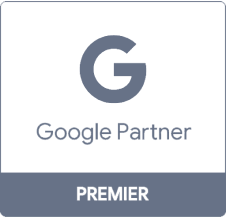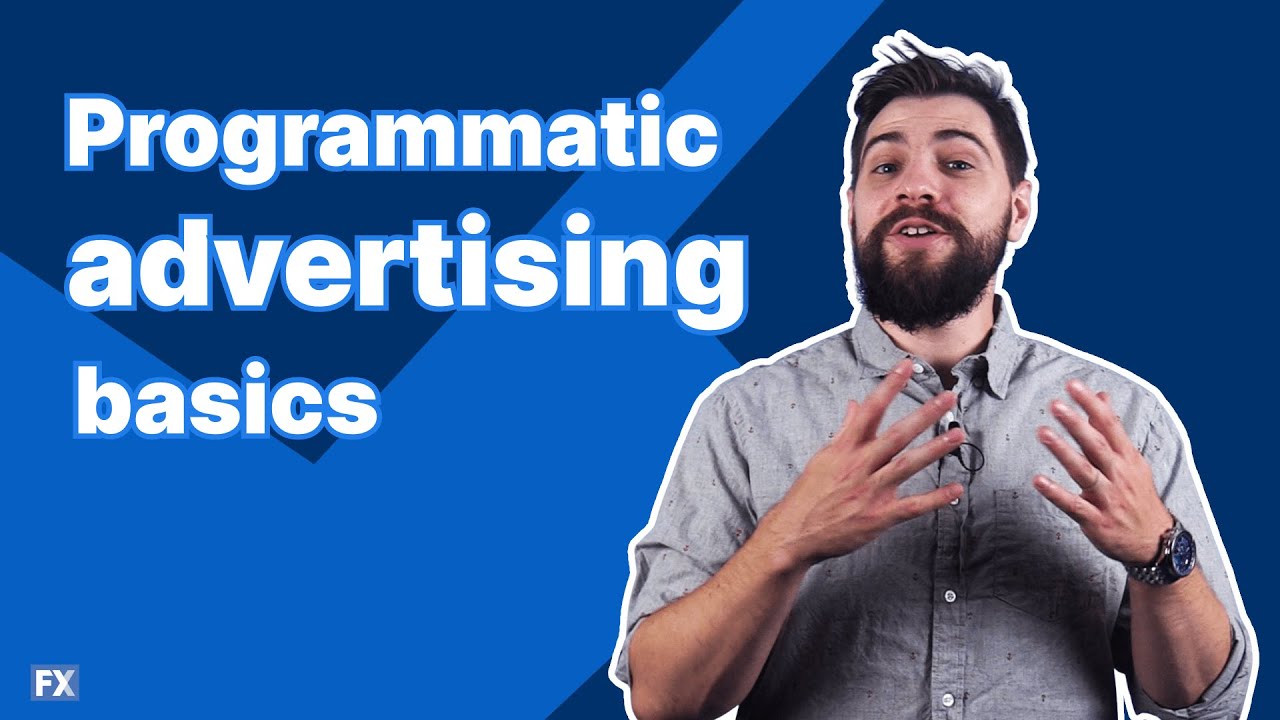Programmatic Advertising 101: Learn Programmatic Advertising
It’s also why more marketers are looking to learn programmatic advertising, which is where this programmatic advertising 101 guide comes into play. With this guide, you can get a beginner’s breakdown of programmatic marketing, from how it works to how to improve its performance.
Keep reading to learn all about the basics of programmatic advertising. If you’re looking for some professional help with creating, launching, and managing programmatic ads, check out our programmatic advertising services. You can also contact us online or call us at 888-601-5359!
Want to earn more revenue from paid advertising?
Good agencies have more than 50 testimonials.
Great agencies have more than 100 testimonials.
WebFX has over 1,100+ glowing client testimonials.
See What Makes Us Stand out

Why does programmatic advertising matter now?
Programmatic advertising started more than 10 years ago, but it’s taken time to develop into a go-to advertising strategy. Adoption rates, however, have skyrocketed. Just in 2022, for example, global advertisers spent $493 billion on programmatic display ads — by 2024, U.S. is on track to surpass 200 billion dollars.
Why is programmatic advertising catching everyone’s attention now, though? A few reasons, including:
Advancements in the Internet of Things (IoT)
Thanks to significant improvements in the IoT, which enables Internet-connected devices to collect and exchange data, programmatic advertising has become a more valuable and useful strategy to companies, including those with smaller ad spends.
With data from the IoT, your business can create hyper-targeted ads that speak to a user’s wants, needs, and interests. You can also use the IoT to target the right people, using location, interest, and behavior targeting, for example, to focus your ads on the most qualified users.
The Amanda Foundation demonstrates how the IoT made programmatic advertising so valuable.

The non-profit organization generated and customized ads — which aimed to get users to adopt a pet from the Amanda Foundation — based on each user’s interests and pet preferences. If someone preferred dogs and hiking, for example, their ad matched those interests.
With the IoT’s advancements, companies can discover new ways to make the most of programmatic advertising.
Increases in the adoption of digital advertising
Programmatic advertising’s newfound popularity also gets credited to digital advertising’s growth.
In 2019, digital advertising beat traditional advertising. Companies invested more than $125 billion in digital advertising, compared to $109 billion in print advertising. Analysts expect digital ad spend to increase, reaching more than $515 billion in 2023.
As more businesses invest in online advertising, they search for new channels and strategies to use, including programmatic advertising. Early adoption of tactics like programmatic advertising helps companies gain a competitive edge, which can lead to not only increased revenue but also market share.
With programmatic marketing’s increased capabilities, it’s critical for marketers and business owners to learn programmatic advertising. Once you know the basics of programmatic advertising, you can decide if it’s the best route for your online advertising strategy.
Programmatic marketing 101: What is programmatic advertising?
Programmatic advertising, also called programmatic marketing, is an automated strategy for online advertising. With programmatic advertising, advertisers can use artificial intelligence (AI), machine learning, and real-time bidding (RTB) to automate the creation of ads and the purchase of ad space.
Programmatic marketing 101: How does programmatic advertising work?
When it comes to learning programmatic advertising, it can become confusing when talking about how programmatic advertising works. This programmatic advertising 101 guide, however, aims to make mastering the basics of programmatic marketing simple.
Before reviewing the step-by-step process, here are a few terms to know:
- Demand-side platforms (DSPs): A DSP, like Google Ad Manager, provides advertisers with a place to manage their ad exchange and data exchange accounts. For reference, an ad exchange is where people buy and sell ad inventory while a data exchange houses advertising data.
- Supply-side platforms (SSPs): An SSP, like OpenX, provide publishers with a place to manage their available ad inventory, which advertisers can purchase through real-time bidding and programmatic advertising.
Ok, now how does programmatic advertising works? Here is a three-step overview:
- A user visits a website, like a news site, that allows ads
- A process initiates between the DSP and SSP to find and deliver an ad relevant to that user
- A relevant ad appears on the website
In the above process, most of the action happens in the second step.
Here is a breakdown of step two:
- The website (that allows ads) uploads its available inventory or ad space to the SSP
- The SSP reviews the user’s browser cookies and uses that cookie data to find relevant ads
- The DSP looks at the user data found by the SSP, and then assigns a monetary value to that user
- The DSP, using advertiser budgets as a reference, submits bids to the SSP for that ad space
- The SSP checks all the submitted bids and chooses a winner
- The SSP updates the website with the winning ad
The above processes happen instantly, with users rarely experiencing a delay — and that’s programmatic advertising explained!
How do you measure programmatic advertising’s performance?
Like any other digital advertising strategy, you want to monitor and measure the performance of your programmatic advertising campaign. Luckily, you can access plenty of metrics to assess and analyze your strategy.
Three useful programmatic marketing metrics you can use include:
1. Last click
The last click metric measures whether your ad was the last click before purchase. That means before someone bought your product or service, they clicked on your ad. Your ad is directly responsible for their conversion.
While useful, this metric doesn’t consider the impact of other channels and user interactions. For example, maybe that person clicked on your ad and bought your product because they had visited your site before, finding it through Google search.
If you use this metric, remember its limited view when it comes to the full scope of your campaign.
2. View and click
The view and click metric measures the number of views and clicks earned by your ad, and how those numbers compare to your conversions and conversion rate. For example, people may see your ad multiple times before clicking on it, but those impressions served a vital role in getting that click.
A downside to this metric, however, is appeal. Many business leaders want to see financial results from advertising. If your ad doesn’t generate sales or leads, it becomes difficult to show its value, even if it’s helping with critical areas like brand awareness.
3. Test and control
The test and control metric measures the entire buyer journey by considering the impressions, clicks, and conversions of your ad, as well as how your paid strategy coordinated with other channels, like organic, social, and email.
While this metric requires more time and dedication, a customer data platform (CDP) can make your work easier. That’s because CDPs compile all your marketing, advertising, and customer data, which you can then view and analyze.
93% of WebFX customers are extremely satisfied with their digital marketing results.
“Working with WebFX, everything is very organized and strategic. We’re only a year into our partnership, and our expectations have definitely been met.”
View More Client Testimonials

3 ways to get the best results from programmatic advertising
While programmatic advertising automates a significant amount of your work, you should still take a proactive role in your campaign and strategy. This kind of approach will provide your business with the best return on investment (ROI).
Improve your programmatic advertising results with these three tips:
1. Leverage demographic and behavioral data
If you can come away from programmatic marketing 101 with one piece of information, it’s that data is your best friend.
Taking the time to investigate and interpret your user data can help you find quick wins for your campaign. For example, you may notice from past Google Ads campaigns that users rarely convert on mobile devices, which could lead to you excluding this group from your programmatic ads.
Remember to look at data from multiple sources too, including:
- Social media
- Paid
- Organic
If you have a brick-and-mortar location, you can even use data from in-store interactions to inform your programmatic advertising campaigns. For example, you could determine your busiest hours and days to find the best times to deliver your ads.
Say your company’s busiest time is on the weekends.
If you want to improve your slow days, say Monday through Friday, you could experiment with delivering your ads on those days and even include a special offer that motivates users to visit your location then, versus on the weekend.
Bonus Tip: Learn how to leverage your data to implement an effective campaign with these programmatic advertising and first-party data examples!
2. Use a CDP for upgraded user insights
If you want to move up from programmatic advertising 101, a CDP can provide your business with helpful information about your audience and their journey, which you can use to enhance your entire marketing strategy.
That’s because a CDP compiles all your user data and interactions into individualized profiles. For example, if Cindy A visited your product page, signed up for your email newsletter, and commented on your social media post, you could access all that information in your CDP.
With this bounty of data, as well as its convenient organization, your business can discover buyer trends and patterns, which you can use to enhance your programmatic ads. If your email marketing initiatives tend to convert well, for instance, you may lend more support to that strategy.
The best part is you don’t have to create a CDP — you can purchase one.
3. Focus on your audience’s wants, not yours
Every advertising campaign should concentrate on your audience. You may want your viewers to buy your product or contact your company, but if your ad focuses too much on your wants versus your audience’s wants, it will underperform.
That’s why you need to think about what your target buyer wants.
Are they looking for an easier solution to cleaning their house, for example? Or do they need help with managing their company’s accounting? Maybe they want to learn more about the pros and cons of investing in a service or product.
Think about your audience and how you can help them.
A cleaning company, for example, may angle their ads away from free quotes to easy-to-schedule cleaning services, which then lead users to request a free quote. Promote what problem you solve versus what services or products you offer.
Improve your ad revenue with programmatic advertising
In this programmatic marketing 101 guide, you’ve learned how programmatic advertising offers your business a brand-new way to promote your company, products, or services. With the hyper-targeted, cost-effective ads you can create, you can drive new leads and sales throughout the year.
If you don’t have the time, experience, or resources to lead an in-house programmatic advertising campaign in-house, WebFX can help. With our programmatic advertising services, you’ll receive a custom campaign, dedicated account manager, and advanced marketing automation software.
You’ll also get results, as demonstrated by the more than $6 billion our programmatic advertising company has driven in revenue for our clients in the past five years. Even better, you’ll get a client-focused experience, which means answers to your emails, responses to your questions, and more.
Get a better return from your ads by contacting us online or calling us at 888-601-5359 for a free proposal!
Table of Contents
- Why Does Programmatic Advertising Matter Now?
- Programmatic Marketing 101: What is Programmatic Advertising?
- Programmatic Marketing 101: How Does Programmatic Advertising Work?
- How Do You Measure Programmatic Advertising’s Performance?
- 3 Ways to Get the Best Results from Programmatic Advertising
- Improve Your Ad Revenue with Programmatic Advertising
Related Resources
- Keyword Marketing: How to Do Keyword-Based Advertising
- Need to Promote Your Business? Learn How to Advertise Your Business with These 7 Tactics
- Podcast Advertising 101: How It Works and How to Get Started
- Print Ads Vs Online Ads
- Programmatic Advertising Examples
- Programmatic Advertising Glossary: 55+ Terms & Definitions
- Programmatic vs. Traditional Advertising: Which is Better for Your Business?
- Radio Vs Internet Advertising
- Revenge of the Pop-Ups: Does Your Website Need One?
- Treating Your Web Site As an Advertisement
Marketing Tips for Niche Industries
- HVAC Advertising Strategies
- LegitScript Certification for Rehab Centers
- LegitScript for Google Ads
- Local SEO for Building Material Suppliers [+4 Tips for Success]
- Top 3 Online Advertising Services for Contractors
- What Are Co-op Advertising Dollars, and How Can They Help You?
- What is Industrial Advertising and Why Invest in Industrial Digital Advertising?
- Your Guide to Google Local Services Ads for Garage Door Companies
- YouTube Ads for Ecommerce: 5 Tips for YouTube Ecommerce Ads
- 3 Fantastic Farmers Market Advertising Ideas










